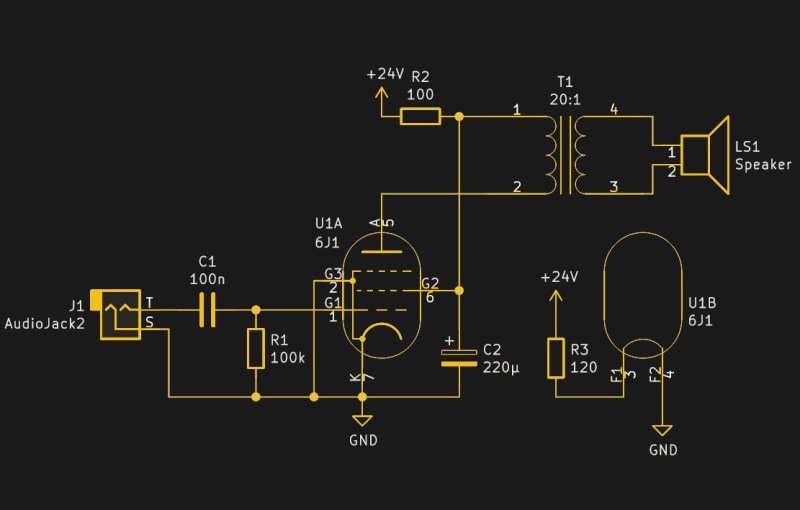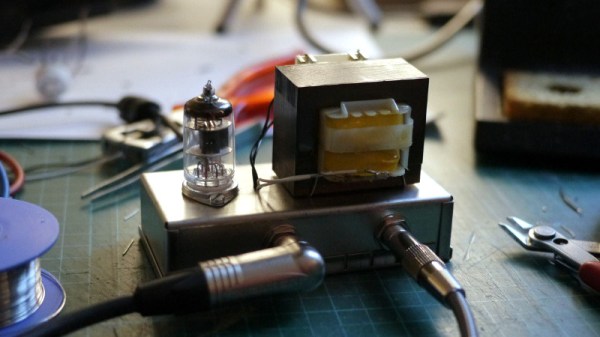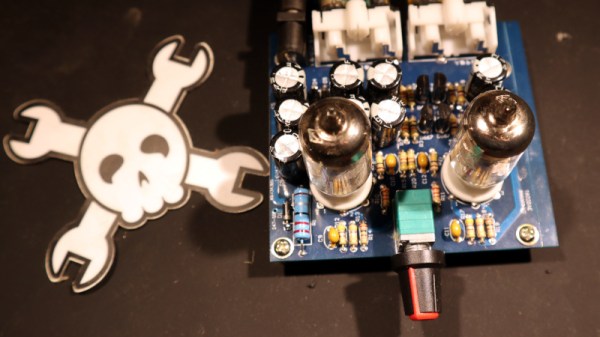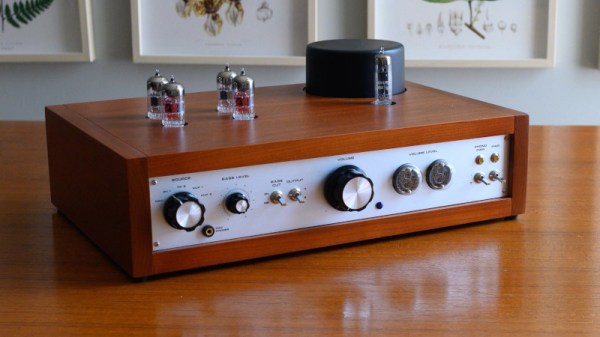At the extreme budget end of tube audio lie single-tube amplifiers usually using very cheap small-signal pentodes. They’ve appeared here before in various guises, and a fitting addition to those previous projects comes from [Kris Slyka]. It’s a classic circuit with a transformer output, and it provides enough amplification to drive a pair of headphones or even a speaker at low levels.

Most tube enthusiasts will instantly recognize the anode follower circuit with a transformer in the anode feed through which the output is taken. The tube works in Class A, which means that it’s in its least efficient mode but the one with the least distortion. The transformer itself isn’t an audio part, but a small mains transformer taken from a scrap wall wart. It serves not only for isolation, but also to transform the high impedance output from the tube into a low impedance suitable for driving a headphone or speaker.
The HT voltage is a relatively low 24 V, but it still manages to drive headphones acceptably. Speaker levels require a pre-amp, but even then it’s likely that this circuit is pushing the tube beyond what it’s capable of with a speaker. The more it operates towards the edge of its performance envelope the more distortion it will generate and the worse a sound it will produce. This isn’t such a problem in a guitar application as here, but hi-fi enthusiasts may find it to be too much. It would be interesting to subject it as a headphone amplifier to a series of audio tests to evaluate the effect of a mains transformer over a dedicated audio one.
Last year we took a very in-depth look at the commonly-available Chinese kit pre-amps that use a similar anode-follower circuit but without the transformer. We’ve also seen a similar amp that uses an op-amp as an impedance converter, as well as a novel take on the idea whose unusual biasing allows it to run from only 3.3 volts. These circuits can be so cheap to get started with that we’d suggest anyone give them a try.



 What I received for my tenner was a press-seal bag with a PCB and a pile of components, and not much else. No instructions, which would have been worrisome were the board not clearly marked with the value of each component. The circuit was on the vendor’s website and is so commonly used for these sort of kits that it can be found all over the web — a very conventional twin common-cathode amplifier using a pair of 6J1 miniature pentodes, and powered through a +25 V and -25 V supply derived from a 12 VAC input via a voltage multiplier and regulator circuit. It has a volume potentiometer, two sets of phono sockets for input and output, and the slightly naff addition of a blue LED beneath each tube socket to impart a blue glow. I think I’ll pass on that component.
What I received for my tenner was a press-seal bag with a PCB and a pile of components, and not much else. No instructions, which would have been worrisome were the board not clearly marked with the value of each component. The circuit was on the vendor’s website and is so commonly used for these sort of kits that it can be found all over the web — a very conventional twin common-cathode amplifier using a pair of 6J1 miniature pentodes, and powered through a +25 V and -25 V supply derived from a 12 VAC input via a voltage multiplier and regulator circuit. It has a volume potentiometer, two sets of phono sockets for input and output, and the slightly naff addition of a blue LED beneath each tube socket to impart a blue glow. I think I’ll pass on that component.











